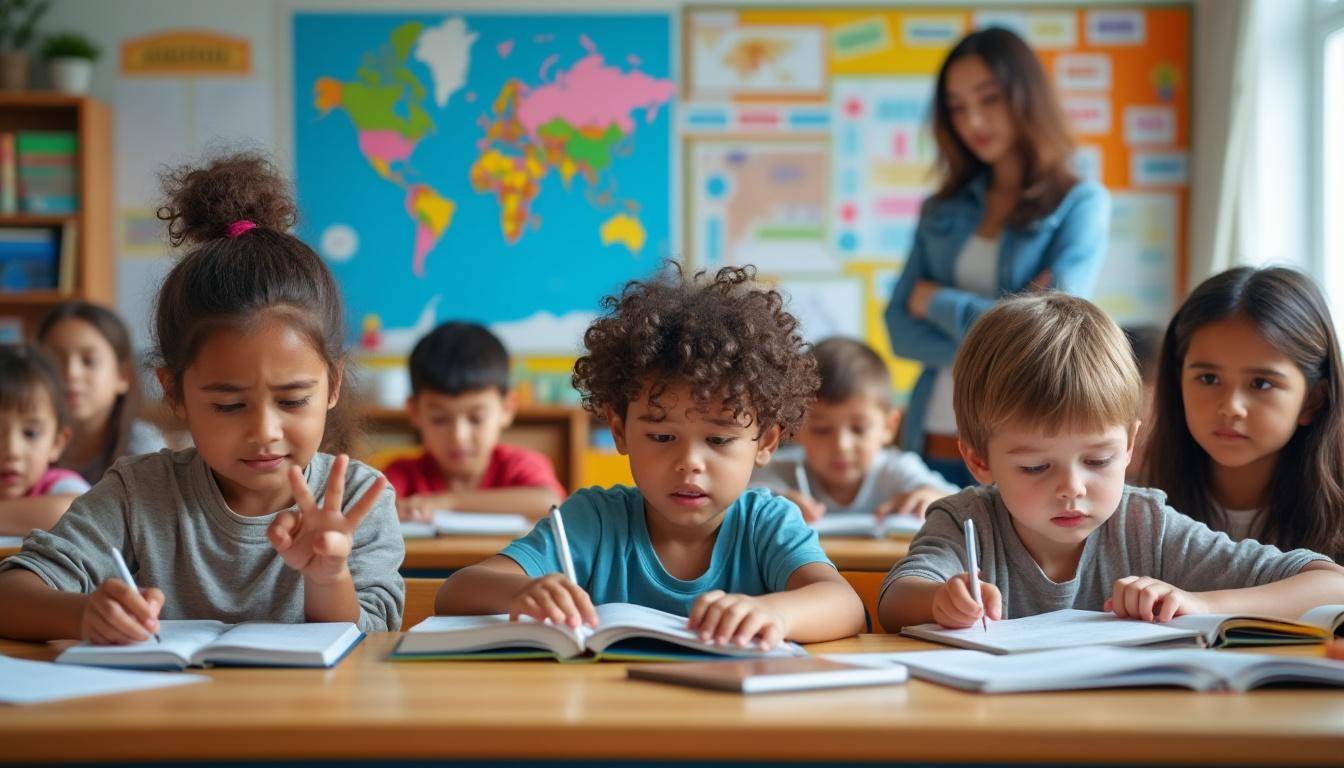As Japan’s foreign population continues to grow rapidly, so does the challenge of ensuring foreign children acquire the Japanese language skills essential for their academic success. Despite government efforts, the educational divide widens, particularly in rural areas where adequate Japanese as a Foreign Language (JFL) instruction is scarce. This divide threatens not only students’ academic achievement but also their social integration and future opportunities.
Rising Number of Foreign Children in Japan and the Impact on Language Learning
The steady influx of foreign nationals, especially those with “engineer/specialist in humanities/international services” visas who bring their families, has led to a significant increase in foreign children attending Japanese public schools. According to recent statistics, over 129,000 foreign children were enrolled in public elementary and junior high schools in 2024, marking a 9% increase from the previous year. However, the systems designed to support their Japanese language acquisition are not keeping pace.
- Nearly 70,000 students require formal JFL instruction, a number that has doubled in just ten years.
- Many schools lack specialized staff, resulting in children growing up without sufficient proficiency to understand their lessons fully.
- Insufficient Japanese skills affect both academic progress and limit social integration, isolating children in their communities.
Urban centers like Matsudo City in Chiba Prefecture have begun implementing robust programs by establishing dedicated JFL classrooms and intensive pre-enrollment language instruction. Yet, such comprehensive efforts are rare outside metropolitan areas.
Challenges of Language Teaching in Urban vs. Rural Settings
While cities like Tokyo and Aichi Prefecture have mobilized staff and volunteers to support JFL instruction, rural areas face growing crises. For example, prefectures such as Tottori and Oita have seen a remarkable 2.3 to 2.4 times increase in foreign children requiring language support but struggle with sparse populations and limited teaching resources.
- About 30% of public schools nationwide have students needing JFL support, but 70% of those schools have fewer than four such students, complicating resource allocation.
- Languages spoken at home include Portuguese, Chinese, Filipino, Vietnamese, Nepali, and Burmese, demanding versatile and adaptive teaching methods.
- Homeroom teachers often bear the sole responsibility for language support without sufficient training or assistance.
To bridge this gap, supplementary programs by public organizations and NGOs offer after-school Japanese lessons, although these remain unevenly distributed.
Innovative Language Learning Tools and Educational Resources for Foreign Students
Advancements in educational technology and resources offer promising avenues to support language acquisition for foreign children. Platforms such as Rosetta Stone, Duolingo, and Babbel provide interactive language practice that can supplement school instruction. Educational publishers like Pearson Education, Scholastic, National Geographic Learning, and Oxford University Press have developed curricula and materials tailored for English as a Second Language (ESL) and Japanese learners.
- Early language development resources help build foundational skills before students enter formal schooling.
- Video tutorials and virtual classrooms enhance access to quality instruction regardless of location.
- ESL Library offers tailored lesson plans for teachers to address varied student proficiencies.
- Programs like Little Pim engage younger learners with immersive language exposure.
- Interactive social platforms such as Edmodo foster peer support and collaborative learning.
Integrating these tools can empower both students and educators, especially in under-resourced rural settings. For more on how technology can transform teaching, explore this resource.
Policy and Community Efforts to Address Educational Inequalities
The Ministry of Education, Culture, Sports, Science, and Technology (MEXT) recognizes these challenges and has incorporated Japanese language instruction into national curriculum guidelines since 2018. However, staffing and program implementation remain local responsibilities, leading to disparities.
- Record numbers of foreign children remain unenrolled or with unknown school status, signaling barriers to access.
- Urban areas benefit from volunteer involvement and dedicated educational staff, while many local governments in rural regions struggle to secure funds and trained personnel.
- Experts call for a cohesive national policy to restructure education systems for equitable Japanese language acquisition and integration.
Building awareness of the importance of social infrastructure that supports foreign residents is crucial. This includes parent and community engagement, which can be nurtured with guidance found at how parental engagement nurtures social skills.
Future Outlook: Meeting the Needs of Multilingual Learners in Japan’s Schools
Japan’s foreign population is projected to grow substantially over the coming decades, increasing the urgency to close the language gap. Ensuring foreign children achieve proficiency in Japanese not only supports academic success but also promotes social cohesion and equal opportunities.
- Leveraging digital platforms and immersive tools such as virtual reality in education can deepen language immersion.
- Expanding access to authentic assessment methods ensures learners’ progress is accurately tracked and catered to.
- National coordination between government, educators, and communities can improve system-wide equity.
- Continuous professional development for teachers in multilingual pedagogy is essential.
- Integrating cultural understanding encourages appreciation of diversity alongside language learning.
By adopting comprehensive strategies and embracing innovative educational tools, Japan can create inclusive classrooms that empower all children, fostering a generation ready to thrive in a globalized world.


